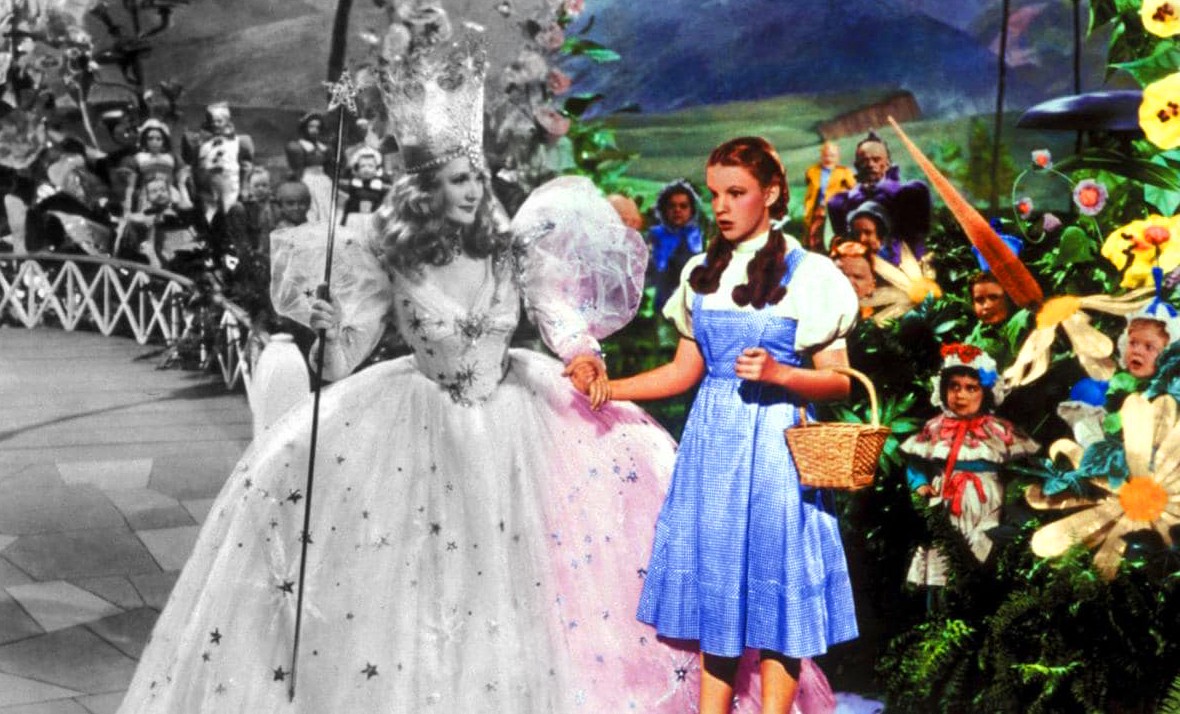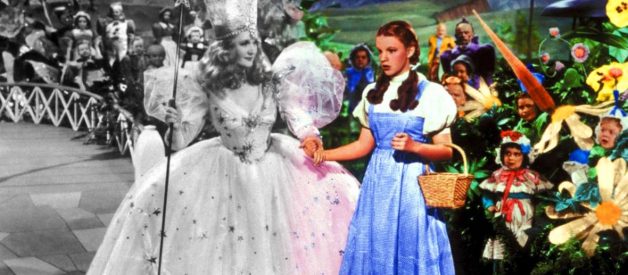The curious history of black and white dreams
 Billie Burke as Glenda the Good Witch and Judy Garland as Dorothy in the Wizard of Oz (Image source: Rex/Everett Collection. Image manipulation: author)
Billie Burke as Glenda the Good Witch and Judy Garland as Dorothy in the Wizard of Oz (Image source: Rex/Everett Collection. Image manipulation: author)
The question ?Do you dream in color?? is one that most of us have probably been asked, or have considered at some point. If so, what would you answer? Do you remember what your dreams look like? Are they in color or are they in black and white? If you think about it, there is something slightly odd about this question and its implicit assumption. In other words, why would we not dream in color? The world, and our experience of the world, is full of color, so why wouldn?t our dreams also be colorful? Why would we ever assume that we dream in black and white, or grayscale? The question, as it turns out, reveals a lot about how we think about and remember our experiences, and might even be a product of having lived in the technological age. At the beginning of the 20th century, our dreams changed color, or to be more accurate, our descriptions of our dreams changed ? and then, in the 1960s they changed again! Why?
Accounts of dreams by people living before the 20th century often contained descriptions of color. People like Aristotle, Descartes, and Freud, to name a few, often described the presence of color in their dreams. Then, around 1900 something happened. Dreams, all of a sudden, became black and white, or rather they began to be remembered as black and white. By mid-century, researchers believed that dreams were by default, grayscale.
Then in the 1960s things changed again, and researchers began reporting a higher incidence of color in reports of dreaming, and the popular question, ?Do you dream in color?? was born.
But why, at the beginning of the 20th century, did reports of dreaming, show a conspicuous lack of color, and why, half a century later, did color seem to reappear? One of the most popular explanations pins the cause on the popularity of black and white film, television, newspapers, and photography. Though invented earlier, it wasn?t until the early 20th century that such media became commonplace in technologically advanced societies. Before then, no one had experienced life in ?grayscale?, and it is hypothesized that the widespread exposure to black and white media ?colored? our dreams (pun intended).
One of the earliest and most influential studies of color in dreams was performed by W.C. Middleton in 1943 ? of the 277 college students tested, 70.7% reported ?rarely? or ?never? seeing colors in their dreams, whereas only 10% reported ?frequently? or ?very frequently?. Studies like this confirmed for many researchers in the field of dream psychology that dreams are by nature grayscale. Color was rare, appearing only when associated with emotionally charged events, or in some cases, the result of psychologically repressed and excremental contents!
With the widespread availability of color TV and color photography in the 1950s and ?60s, people began again to report that their dreams were colorful. Like Dorothy entering the technicolor world of Oz ? our dream-life went from black and white to color! In 2001, Eric Schwitzgebel, of the University of California, Riverside, replicated Middleton?s research with a similar group of students. He found that only 17.7% reported ?never? or ?rarely? seeing color, with 56.5% claiming that they saw colors ?frequently? or ?very frequently?. Similar results have been replicated in other countries, including China where researchers compared populations that have access to colored media (largely urban) to populations that have little access to colored television and media (rural) with similar results.
Some question the above ?media hypothesis?, pointing out that the methodologies for obtaining dream data also changed in the 1960s, and that this most likely accounts for the larger incidence of color. Most of the early studies of color in dreams relied on questionnaires, and the respondent?s ability to recall their dreams, often long after the actual dream. Starting in the 1960s, researchers tended to gather dream reports immediately upon waking, or after intentionally waking up subjects during REM sleep. Findings suggest that reports taken immediately upon awakening have a significantly higher incidence of color reported in dreams, indicating that the key factor is our ability to recall our dreams accurately. This is complicated, however, by the fact that even when the older methods (questionnaires, etc.) are used today there is still a disparity between those exposed to black and white media, and those who grew up exposed to colored media.
In answer to our question ? we probably do dream in color, but it could also be that like the novels we read and the stories we tell, dreams have no determinate color. Most of us probably don?t pay attention to color in our dreams, so it is hard to say whether they are experienced in the same all-surround-technicolor of our waking lives. What these studies do point out is that there is a huge gap between our experience and our reporting of our experience. When it comes to perception, we are not the most reliable of witnesses. In order to know for sure, we will need to engage in some serious phenomenological research. This can only mean one thing ? time for bed!
Bill Nelson ? Do You Dream In Colour? (1981)


